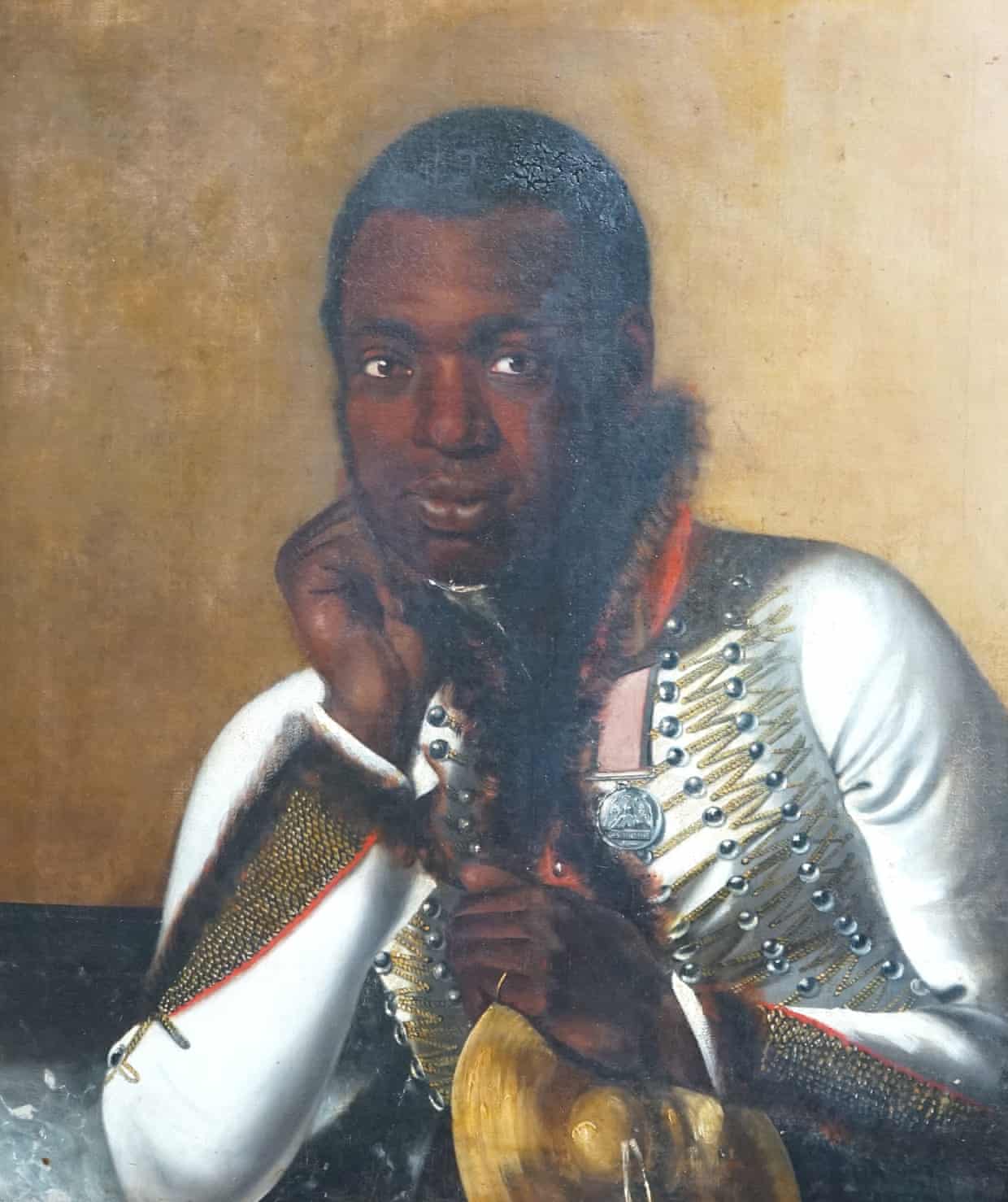From monkey elixir to fentanyl: Tyler Skaggs’s death is merely a chapter in baseball’s 136-year drug fix

As the LA Angels stand trial over the pitcher’s death in the quiet shadow of the World Series fanfare across town, a sport confronts a truth practically as old as the game itselfBefore steroids, before amphetamines and before fentanyl, baseball’s first documented chemical dalliance came from monkey testicles.In August 1889, a worn-down pitcher for the Pittsburgh Alleghenys named James Francis “Pud” Galvin, so nicknamed for his once-devastating ability to reduce hitters to “pudding”, was in need of a spark.He was 32, his right arm a rubbery relic of nearly 5,000 innings pitched, his career on the fade.Then came salvation in a syringe.A French-Mauritian doctor by the name of Charles-Édouard Brown-Séquard published a paper – The Effects Produced on Man by the Subcutaneous Injections of a Liquid Obtained from the Testicles of Animals – in which he claimed that a few drops of an extract sourced from dogs and guinea pigs might well make ordinary men stronger and more virile.
Galvin, a stocky power pitcher, wasted no time getting jabbed with the so-called Brown-Séquard elixir in a public demonstration at the Western Pennsylvania Medical College, only four miles east from the team’s home ground.The next day he pitched a five-hit shutout to turn back the Boston Beaneaters, adding a double and a triple at the plate off the great Old Hoss Radbourn for good measure.(Take that, Ohtani.)“If there still be doubting Thomases who concede no virtue of the elixir, they are respectfully referred to Galvin’s record in yesterday’s Boston-Pittsburg game,” wrote the Washington Post, with proto-advertorial flourish.“It is the best proof yet furnished of the value of the discovery.
” No one thought to call it cheating, even before Brown-Séquard’s colleagues called cap on the tonic’s efficacy in the weeks that followed.Why would they? Good old Pud wasn’t breaking the rules so much as pushing the boundaries of willpower and endurance.In baseball, those things have often been one and the same.A century and a half later, another kind of chemical promise ended differently.In a California courtroom this month, lawyers for the family of Tyler Skaggs, the Los Angeles Angels pitcher who overdosed on a fentanyl-laced pill in 2019, argued that the team itself should be held responsible for his death.
The ongoing civil trial follows the criminal conviction of Eric Kay, the Angels’ former communications director, who is serving 22 years for providing the counterfeit oxycodone that killed Skaggs.The pitcher was 27, newly married, and still recovering from a string of injuries that had stalled his career.The pills were supposed to keep him pitching.His family’s attorney, Shawn Holley, who cut her teeth as a deep reserve on OJ’s Dream Team, told jurors that the Angels ignored their own drug policy, allowing a known addict like Kay to keep his job and his access to players.“They buried their heads in the sand over and over and over again,” she said Tuesday.
The team’s lawyer, Todd Theodora, replied that Skaggs’s death was “the result of his own reckless decision to mix large amounts of alcohol with narcotics”.Mike Trout, one of the greatest players of his generation, testified that he loved Skaggs “like a brother” and never saw him use, but the Angels’ longtime superstar confessed he’d seen Kay acting “wired and sweating” and thought immediately of drugs.The case may hinge on legal technicalities, but its meaning extends back decades through the game’s entire pharmaceutical lineage.For practically as long as professional baseball has existed, its players have reached for something – legal, illicit, prescribed, improvised – to dull the ache, sharpen the focus or prolong the dream.The substances may change, but the justifications never have.
That it’s all quietly unfolding while the vastly more popular crosstown team basks in World Series fanfare only underlines baseball’s helplessness to resist metaphor.After the second world war, amphetamines – AKA “greenies” – became as much a part of the clubhouse as black coffee and chewing tobacco.Pitcher Jim Bouton wrote in baseball’s all-time bestseller, Ball Four, how bowls of little white pills sat beside the doughnuts before day games.Hall of Famers like Willie Mays were said to keep liquid versions in their lockers.The pills didn’t make you stronger, but they made you believe you could keep going.
In a sport built on the stubborn art of persistence and routine, that was the whole point,No other professional sport puts a player through quite the same gauntlet,From the interminable grind of a 162-game regular season (which can swell past 200 with spring training and a deep postseason run) to the daily wear and tear of travel, rainouts and doubleheaders, baseball rewards not flashes of brilliance but the simple act of staying in the lineup,The greatest ability is availability,In Bull Durham, Crash Davis’s monologue on the minuscule margins at play over the course of a six-month season – how one hit a week is the difference between a Hall of Fame career and a forgotten one – lays bare the timeless temptation facing any ballplayer.
By 1970, the pursuit of transcendence had turned stranger and somehow more American.On a misty June night in San Diego, Pittsburgh Pirates right-hander Dock Ellis threw a no-hitter while tripping on LSD.He later recalled thinking Richard Nixon was the home-plate umpire and Jimi Hendrix was batting, Fender Stratocaster at the ready.He walked eight, hit another, allowed three stolen bases, and somehow gave up no hits.It remains one of only 326 no-hitters out of more than 238,000 major-league games played.
By the time he went public with the fantastic tale in a 1984 interview with Bob Smizik of the Pittsburgh Press, baseball was happy to let the episode fade into apocryphia,Ellis claimed he pitched every game under the influence of something – booze, Benzedrine, Dexamyl – the old-school Hollywood buffet of the 1970s locker room,After retiring, he got sober, worked in prisons and community programs, and came to regret the accidental feat that defined him,“It robbed me of my greatest professional memory,” he said,Yet his acid-fueled no-no endures as the perfect parable for baseball’s relationship with drugs: a dazzling act of control achieved in a state of delirium, equal parts genius and madness.
Cocaine overtook acid and amphetamines as the drug of choice in the 1980s.The Pittsburgh drug trials in 1985 exposed a league where dealers walked freely into clubhouses and players could procure booger sugar from city to city on the National League circuit as easily as sunflower seeds.MLB commissioner Peter Ueberroth handed down commuted suspensions and promised a reckoning that never truly came given the players’ union’s intractable stance against mandatory drug testing.The revelations from the FBI’s 14-month investigation were eye-opening.Keith Hernandez, the 1979 NL MVP, admitted he’d used so much cocaine in 1980 that he couldn’t remember the season at all.
Hall of famer Tim Raines testified he kept a vial in his uniform pocket during games and slid head-first to avoid breaking it,A year after the dust settled, Ueberroth told reporters with straight-faced optimism, “Baseball’s drug problem is over,I believe baseball is going to be the first sport to be free of drugs,” Narrator: it was not,In 1992, one of the implicated players, Rod Scurry, died of a cocaine-induced heart attack aged 36.
Over the following decade, chemistry turned industrial.Steroids and human growth hormone transformed bodies and baseball’s record books.When Mark McGwire and Sammy Sosa chased down and obliterated Roger Maris’s home-run record in 1998, the sport breathlessly marketed their swollen arms as triumphs of human potential.The league had banned steroids on paper in 1991 but waited a dozen more years to begin serious testing, only when Congress and whistleblower Jose Canseco forced the issue in the early aughts.By the time the Mitchell Report named and shamed 90 players in 2007, shedding light on designer performance-enhancing drugs while introducing “the cream” and “the clear” into the cultural lexicon, everyone could only pretend to be shocked by the worst-kept secret in American sports.
It was not until 2005, after the steroid scandal broke, that MLB and the players’ union officially banned amphetamines.But when steroids faded, another pill quietly took their place: Adderall, the quasi-legal heir to the greenie.The stimulant is illegal without a prescription, yet therapeutic-use exemptions multiplied so quickly that by 2013 nearly one in 10 major-leaguers carried one – more than twice the rate in the general adult population.Players described feeling “mentally invincible”, their focus laser-sharp, the ball “looked bigger”.For those without a diagnosis, temptation was everywhere.
Pills were traded, borrowed, quietly shared.Officially, MLB was cracking down on amphetamines; unofficially, it had reinvented them with paperwork.Some players, like minor-league catcher Matt Paré, genuinely needed the medication but chafed at league rules requiring daily use.(Once approved, you’d get dinged if you didn’t test for it.) Others simply learned to time their doses between screenings.
The drug that once came in green pressies now arrived in orange tablets, the same old chemical fortitude in a new prescription bottle.But the real story remains continuity rather than crisis.From Galvin’s monkey-gland injections to Barry Bonds’s designer creams, from greenies to cocaine to Adderall to fentanyl, the game’s pharmacology was never an aberration but baked in to its tradition.The chemistry evolved, but the impulse never did: play through pain, stretch the body beyond its warning signs, stay in the lineup.The same culture that romanticized toughness – the mid-90s fetishization of Cal Ripken’s ironman streak in the only industrialized country with no federally guaranteed paid leave really does feel like a psyop looking back – was the same one that told players to ice it, pop a pill and get back out there.
Skaggs wasn’t trying to break records.He was a rank-and-file hurler out to manage pain.After surgeries and rehab stints, he had become the kind of pitcher modern baseball quietly discards: a once-promising arm now held together by duct tape and meds.The pills were his greenies that let him keep showing up.That they were laced with fentanyl only completed the grim symmetry of baseball’s longest arc: the drugs that once kept players alive on the field could now kill them off it.
After Skaggs’s death, MLB added opioid testing and treatment referrals, just as it had added steroid testing after Balco, just as it had promised clean clubhouses after the cocaine scandals.Every reform has a way of arriving one tragedy late.The cycle repeats because the underlying bargain never changes.Baseball celebrates the #grindset and looks away from the cost.What makes baseball uniquely vulnerable is its mythology of purity, the idea that it reflects some truer, simpler America.
Yet its history reflects the country’s own chemical biography: invention, exploitation, denial, relapse,The substances that helped players endure also helped the league sell endurance as a moral,Other sports metabolized their drug eras – the NBA’s 1970s haze burned off under David Stern’s Olympic-level testing, while in the NFL, pharmaceuticals became accepted tools for managing the excruciating pain the sport inflicts,But baseball’s pharmacology still carries the sting of moral crisis, because it’s the national pastime, because fans still pretend the game’s integrity is sacred and because so much of what’s taken is designed not to dominate but simply to survive,Skaggs’s trial will end the way these things always do: with lawyers parsing intent, responsibility, foreseeability.
But the truth exists somewhere closer to Galvin’s mound at Pittsburgh’s long-gone Recreation Park in 1889, where science met desperation and the crowd applauded the result.Baseball’s relationship with drugs has never been about corruption.It has been about belief – the conviction that the body is improvable, that effort and chemistry are just different routes to the same destination, that pain is something to be managed and bargained with, not respected.Galvin’s Hall of Fame plaque still hangs in Cooperstown, where he’s immortalized despite a career spanning three decades playing for losing teams in smaller markets like Pittsburgh and Buffalo.It lists his career totals for wins and complete games – both second only to Cy Young – not his hypodermic injections.
The elixir is long forgotten, but the inexorable logic behind it endures,The modern player doesn’t need a potion of guinea pig gonads when he has a prescription or a clubhouse attendant who knows where and how to get refills,When the Skaggs trial ends in Santa Ana, the lawyers will pack up their exhibits and the headlines will fade,But somewhere in baseball’s bloodstream, the old faith hums on: the hope that a little something extra can stave off decline, that there’s always another season in the arm if you can just find the right cocktail,From the elixirs of the 1880s to the prescriptions of the 2020s, baseball has woven its chemistry into scripture, a religion of repetition played on tired arms and bad backs, powered by whatever it takes to show up again tomorrow.

UK manufacturers hit by largest drop in orders since 2020; FTSE 100 hits record high – as it happened
British manufacturers see the weakest prospects for orders over the next three months since 2020, new data from the Confederation of British Industry shows.The CBI’s latest healthcheck on manufacturing has found that business sentiment deteriorated this month, with goods producers expecting the total volume of new orders to decline in the three months to January.Business sentiment deteriorated in October. Export optimism for the year ahead also declined further. pic

Oil price jumps and FTSE 100 hits new high after Trump puts sanctions on Russian firms
Oil prices jumped and energy companies helped the FTSE 100 to a record high after Donald Trump announced new sanctions on Russia’s two biggest oil producers.Brent crude increased by 5.2% to $65.83 a barrel – a two-week high – after the news of the fresh restrictions on Rosneft and Lukoil, as the US president ramps up pressure on Vladimir Putin to end the war in Ukraine.The jump in oil price also boosted shares in the energy companies Shell and BP by about 3%, which in turn helped to drive the FTSE 100 to a record high of 9,594

‘Attacks will get through’: head of GCHQ urges companies to do more to fight cybercrime
Companies need to do more to mitigate the potential effects of cyber-attacks, the head of GCHQ has said, including making physical, paper copies of crisis plans to use if an attack brings down entire computer systems.“What are your contingency plans? Because attacks will get through,” said Anne Keast-Butler, who has headed GCHQ, the British government’s cyber and signals intelligence agency, since 2023.“What happens when that happens to you in a company, have you really tested that?” said Keast-Butler, speaking on Wednesday at a London conference organised by the cybersecurity company Recorded Future. “Your plans … have you got them on paper somewhere in case all your systems really go down? How will you communicate with each other if you’re completely reliant on a system that actually you shut down?”Last week, the National Cyber Security Centre, which is part of GCHQ, announced figures showing that “highly significant” cyber-attacks have risen by 50% in the past year. Security and intelligence agencies are now dealing with a new attack several times per week, the figures showed

Nothing Ear 3 review: good-looking earbuds with ‘Super Mic’ party trick
Nothing’s latest semi-transparent noise-cancelling earbuds have a new trick up their sleeves: a high-quality mic in the case that you can push a button to talk into.The Guardian’s journalism is independent. We will earn a commission if you buy something through an affiliate link. Learn more.This so-called Super Mic is designed for all those who want a microphone-in-the-hand experience for clearer conversations, recordings and voice notes in noisy environments

India set New Zealand 325 from 44 overs: Women’s Cricket World Cup – live
14th over: New Zealand 73-3 (M Kerr 26, Halliday 4) Melie Kerr thumps Deepti Sharma’s first ball back over her head for four, then Halliday gets off the mark with a lovely straight drive for four, all along the ground. Might as well!13th over: New Zealand 64-3 (M Kerr 21, Halliday 0) Just a single from Charani’s over. New Zealand threatened a fightback when Plimmer was going well, but this game is probably over now.12th over: New Zealand 63-3 (M Kerr 20, Halliday 0) New Zealand need snookers, aka 262 from 192 balls.Brilliant work from Renuka Singh Thakur, who bowls Sophie Devine through the gate with an immculate off-cutter

Women’s marathon world record-holder Chepngetich handed three-year doping ban
The women’s marathon world record holder, Ruth Chepngetich, has been banned for three years after the Athletics Integrity Unit rejected her claim that her failed drugs test came from taking her housemaid’s medication after feeling hot and having a rapid resting heartbeat.The Kenyan stunned the world when she ran 2hr 9min 56sec at the Chicago marathon in 2024, a time that shattered the previous best by almost two minutes. However her performance was immediately questioned by many in the athletics world who felt it was too good to be true.But while the 31-year-old will not be able to race again until 2028, she will be allowed to keep her world record because her positive drugs test came after her run in Chicago. That will leave a sour taste in the mouth for many people

London museum identifies black Waterloo veteran in rare 1821 painting

‘I was working as a cook when it went to No 1’: how Norman Greenbaum made Spirit in the Sky

I can’t stop watching videos of people discovering Beds Are Burning by Midnight Oil. Send help

‘London could 100% compete with Cannes’: Aids charity UK gala debut honours Tracey Emin

Champagne, celebs and artefacts: British Museum hosts first lavish ‘pink ball’ fundraiser

My cultural awakening: The Specials helped me to stop fixating on death